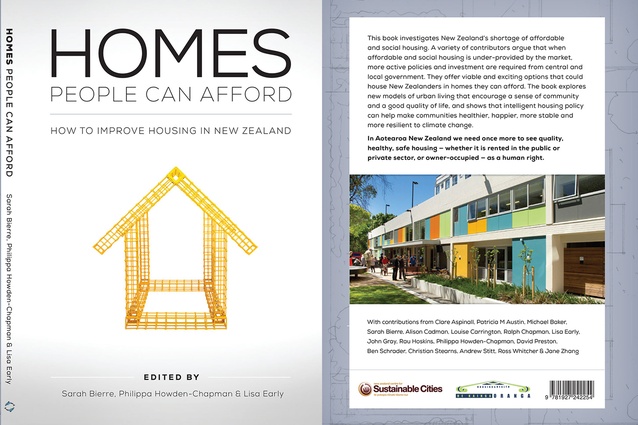Affordable housing issues captured in new book
A new book designed to provide a tailwind for thinking about affordable housing in New Zealand was launched at the National Library in Wellington this week.
Edited by Sarah Bierre, Philippa Howden-Chapman and Lisa Early, Homes People Can Afford, is the fifth in a series of books produced by the New Zealand Centre for Sustainable Cities and published by Steele Roberts Aotearoa.
The motivation for such a book is the fact that the need for affordable and social housing is not about to diminish any time soon and as a recurrent issue deserves dedicated analysis. Notably it also happens to coincide with a timely series of articles on housing issues being run in Architecture New Zealand, the journal of the NZ Institute of Architects, and featured on Architecture Now.
Howden-Chapman’s hope is that the new book may contribute to growing a larger appetite for building affordable housing at the type of scale needed.
“Housing policies cannot helpfully be made piecemeal,” she said. “We must reimagine mixed communities close to public transport. The advantages are manifold. We must shift the focus away, again, from bespoke houses.”
Housing New Zealand chief executive Glen Sowry also spoke at the launch, using his opportunity to convey his own personal commitment to remaining connected to communities in a “role of stewardship”, as well as broadcasting current HNZ programmes at length.

Sowry said his future vision for the statutory corporation is that it “must lead by example when it comes to designing and building homes”.
“We must also embrace innovation and strive for excellence in customer service [in order] to be the best social housing provider that we can be,” said Sowry – having earlier acknowledged that “in hindsight”. Housing New Zealand’s closure of community-based offices had not achieved a perfect balance, leading to a policy reversal and decision to re-open some offices.
Homes People Can Afford should provide Mr Sowry with even more food for thought.
It begins with four chapters that describe the history of housing market failure and governmental responses, including the idea of policy ‘drift’ arising from inaction. Later in the book the case is made for social and affordable housing to be part of national infrastructure – with content on partnerships for affordable housing that draws in part from the work of visiting scholar Christian T. Stearns, as also published by Fulbright New Zealand.
A chapter by key people at the Wellington Housing Trust gives some insight into the vagaries of policy implementation from the point of view of community housing organisations. The multi-author book later rounds off with a council perspective from Wellington City Council before shining a light on initiatives such as Rau Hoskins’ nano whare project and the Living Ark Trust.
Homes People Can Afford offers a view that the single dwelling on a quarter acre section is no longer an affordable model of housing “and has not been for a long time”. Equally refreshing is a concluding call for a change in attitudes: away from labelling all those who live in social housing as “dependent”, and away from assumptions that everyone is able or necessarily should aspire to home ownership.
It reflects an acceptance that private and community sector investors alone can’t fill the shortfalls in houses to rent or buy, and that government must move on from strategies of limited scope and sustainability to making greater investment a higher priority, if only because “any government that does not invest actively in social housing is unlikely to solve the social housing crisis”.










